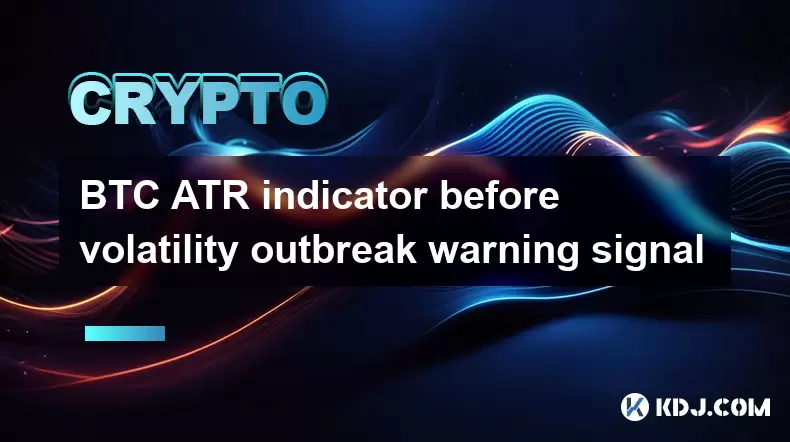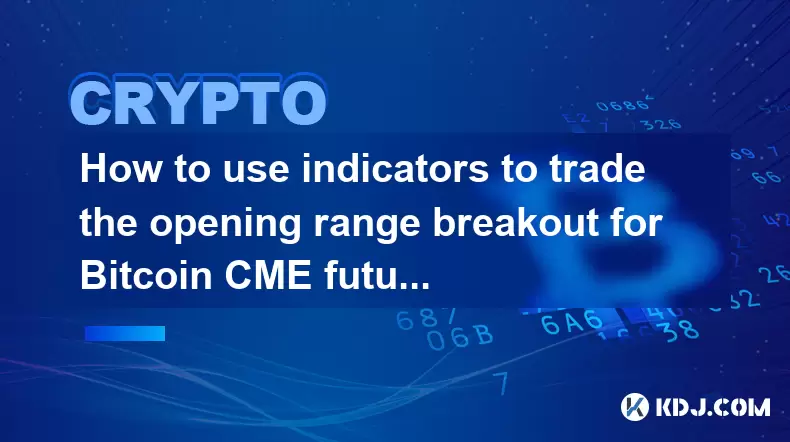-
 Bitcoin
Bitcoin $117900
0.31% -
 Ethereum
Ethereum $3766
0.28% -
 XRP
XRP $3.176
-0.31% -
 Tether USDt
Tether USDt $1.000
0.00% -
 BNB
BNB $795.6
1.51% -
 Solana
Solana $186.8
-1.09% -
 USDC
USDC $0.9999
-0.01% -
 Dogecoin
Dogecoin $0.2353
-1.33% -
 TRON
TRON $0.3226
1.49% -
 Cardano
Cardano $0.8172
-1.08% -
 Sui
Sui $4.178
3.06% -
 Hyperliquid
Hyperliquid $43.05
-3.39% -
 Stellar
Stellar $0.4367
-0.57% -
 Chainlink
Chainlink $18.62
1.47% -
 Hedera
Hedera $0.2828
6.63% -
 Bitcoin Cash
Bitcoin Cash $584.7
5.65% -
 Avalanche
Avalanche $24.81
2.53% -
 Litecoin
Litecoin $112.8
-0.88% -
 UNUS SED LEO
UNUS SED LEO $8.975
-0.08% -
 Shiba Inu
Shiba Inu $0.00001395
-1.07% -
 Toncoin
Toncoin $3.285
-1.05% -
 Ethena USDe
Ethena USDe $1.001
0.01% -
 Polkadot
Polkadot $4.123
0.76% -
 Uniswap
Uniswap $10.49
-0.18% -
 Monero
Monero $326.5
0.14% -
 Dai
Dai $0.9999
-0.02% -
 Bitget Token
Bitget Token $4.576
0.34% -
 Pepe
Pepe $0.00001247
-1.55% -
 Cronos
Cronos $0.1400
3.77% -
 Aave
Aave $295.1
-0.73%
BTC ATR indicator before volatility outbreak warning signal
The BTC ATR indicator measures volatility by analyzing price range data, helping traders anticipate potential breakouts and manage risk through dynamic stop-loss levels.
Jun 09, 2025 at 02:49 pm

Understanding the BTC ATR Indicator and Its Role in Volatility Prediction
The BTC ATR indicator, or Average True Range, is a technical analysis tool used to measure market volatility. Originally developed by J. Welles Wilder for commodities, it has since become widely adopted across various financial markets, including cryptocurrency. The ATR does not indicate price direction but rather focuses on the degree of price movement over a specified period. For Bitcoin (BTC) traders, understanding how this metric behaves can provide crucial insights into potential volatility outbreaks.
When the ATR value starts rising significantly, it often signals an increase in price movement. This rise may precede major price swings, offering traders an opportunity to prepare for heightened volatility. Traders who monitor ATR trends closely may be able to anticipate sudden shifts in BTC's price behavior, especially during key market events such as regulatory announcements, macroeconomic changes, or significant exchange movements.
How to Calculate the BTC ATR Indicator
To effectively use the ATR for BTC trading, one must understand its calculation methodology. The process involves several steps:
- Calculate the True Range (TR) for each candlestick. TR is the greatest of the following:
- Current high minus current low
- Absolute value of current high minus previous close
- Absolute value of current low minus previous close
- Compute the average of the True Range values over a selected period (usually 14 periods).
- Smooth the data using a moving average approach for subsequent readings beyond the initial calculation window.
For example, if you are analyzing BTC on a daily chart with a 14-day ATR setting, the first ATR value would be the average of the first 14 TR values. Each subsequent ATR reading would be calculated using the formula:
(Previous ATR × 13 + Current TR) / 14
This smoothing ensures that the ATR adapts gradually to new volatility levels, providing a more stable signal than raw TR data alone.
Identifying BTC Volatility Outbreaks Using ATR Patterns
One of the most valuable applications of the BTC ATR indicator lies in identifying potential volatility breakout points. These usually occur after periods of consolidation when the market is "coiling" before a sharp move. Observing ATR behavior during such phases can offer early warning signs.
During extended low volatility periods, ATR values tend to decrease steadily. However, once the market senses a directional bias—whether due to news, whale movements, or broader macroeconomic factors—the ATR begins to rise sharply. This upward spike in ATR often coincides with or slightly precedes a breakout in BTC’s price.
Traders should pay attention to the following patterns:
- ATR divergence from price action: If BTC price remains range-bound while ATR begins to climb, it could indicate underlying pressure building up.
- Breakout confirmation through ATR surge: When a breakout occurs alongside a sharp ATR increase, it validates the strength of the move.
- Historical comparisons: Comparing current ATR levels to historical averages can help assess whether the market is entering a high-volatility phase.
These observations can be particularly useful in BTC options and futures trading, where volatility plays a central role in pricing and risk assessment.
Practical Steps to Integrate BTC ATR into Trading Strategy
Incorporating the ATR indicator into your BTC trading strategy requires both technical knowledge and practical implementation. Here’s how to do it step-by-step:
- Select the appropriate timeframe: Choose a timeframe that aligns with your trading style. Day traders might use hourly charts with a 14-period ATR, while swing traders may prefer daily charts with a longer period.
- Add the ATR indicator to your charting platform: Most platforms like TradingView, Binance, or MetaTrader include ATR by default. Ensure it’s correctly configured to match your strategy.
- Monitor ATR thresholds: Establish baseline ATR values based on recent history. For instance, if BTC’s daily ATR has averaged 200 USD over the past month, a sudden jump to 400 USD could signal increased volatility.
- Combine with other indicators: Use ATR in conjunction with trend-following tools like moving averages or momentum oscillators to filter false signals and improve accuracy.
- Set dynamic stop-loss levels: Adjust stop-loss distances according to the current ATR reading. Wider stops during high volatility help avoid premature exits.
By integrating these steps into your trading routine, you can better manage risk and position yourself ahead of potential BTC volatility surges.
Common Misinterpretations of the BTC ATR Signal
Despite its usefulness, the BTC ATR indicator is often misunderstood or misapplied. One common mistake is interpreting ATR spikes as buy or sell signals. In reality, ATR only reflects volatility, not direction. An increasing ATR could mean either a bullish or bearish breakout, depending on the context.
Another frequent error is failing to adjust ATR settings according to the asset or timeframe. Since BTC exhibits different volatility characteristics compared to traditional assets, using default ATR parameters without customization may lead to misleading signals.
Additionally, some traders ignore the importance of volume in conjunction with ATR. High ATR values accompanied by strong volume suggest genuine market interest, whereas high ATR with low volume might point to erratic or artificial price moves, such as those caused by wash trading or large whale activity.
Avoiding these pitfalls ensures that the ATR remains a reliable tool for gauging BTC volatility without leading to flawed trading decisions.
Frequently Asked Questions
Q: Can the BTC ATR indicator predict exact price movements?
No, the ATR does not forecast price direction. It measures volatility intensity, which helps traders assess the magnitude of potential price moves, not their direction.
Q: How often should I recalibrate my ATR settings for BTC trading?
It depends on your trading strategy and market conditions. During highly volatile periods, shorter ATR lookback periods (e.g., 7 or 10) may provide quicker responses. In calmer markets, sticking to the standard 14-period setting is generally sufficient.
Q: Is the BTC ATR suitable for automated trading systems?
Yes, many algorithmic trading systems incorporate ATR for dynamic risk management and position sizing. However, ensure it is paired with directional indicators to generate actionable trade signals.
Q: What is the difference between BTC ATR and BTC volatility index (BVOL)?
While both measure volatility, ATR is derived from price range data and is commonly used in technical analysis. BVOL, on the other hand, is typically calculated using options pricing models and reflects implied volatility expectations.
Disclaimer:info@kdj.com
The information provided is not trading advice. kdj.com does not assume any responsibility for any investments made based on the information provided in this article. Cryptocurrencies are highly volatile and it is highly recommended that you invest with caution after thorough research!
If you believe that the content used on this website infringes your copyright, please contact us immediately (info@kdj.com) and we will delete it promptly.
- Ruvi AI: The Next Solana? Riding the AI Token Wave on CoinMarketCap
- 2025-07-28 00:50:16
- BlockDAG, Crypto Coin, XRP, ADA, and SUI: Navigating the 2025 Crypto Landscape
- 2025-07-28 00:30:16
- Riding the Bulls: ROI Tokens and the 2025 Momentum
- 2025-07-28 00:55:14
- Coinbase Wallet: Security, Reviews, and What's the Hype?
- 2025-07-28 00:30:16
- Crypto ETFs and Altcoins: Navigating the Wild West with Meme Coins and Tokenized Assets
- 2025-07-27 23:04:06
- Pi Coin in 2026: Will It Be Worth the Wait?
- 2025-07-27 23:10:12
Related knowledge

What is the significance of the 21-week EMA in a Bitcoin bull market?
Jul 10,2025 at 06:56pm
Understanding the 21-Week EMA in Cryptocurrency AnalysisThe 21-week Exponential Moving Average (EMA) is a technical indicator widely used by traders a...

How to identify a volatility contraction pattern on Bitcoin using indicators?
Jul 07,2025 at 07:28am
What is a Volatility Contraction Pattern in Bitcoin Trading?A volatility contraction pattern refers to a phase where the price movement of an asset, s...

Do indicators work better on a logarithmic or linear scale for Bitcoin's long-term chart?
Jul 08,2025 at 01:42pm
Understanding Chart Scales in Cryptocurrency TradingIn cryptocurrency trading, particularly for analyzing Bitcoin's long-term trends, chart scales pla...

What is the Woodies CCI indicator and can it be used for Bitcoin?
Jul 04,2025 at 05:14pm
Understanding the Woodies CCI IndicatorThe Woodies CCI indicator is a variation of the traditional Commodity Channel Index (CCI), which was originally...

How to use indicators to trade the opening range breakout for Bitcoin CME futures?
Jul 05,2025 at 07:35pm
What Is the Opening Range Breakout Strategy?The opening range breakout (ORB) strategy is a popular trading technique used in both traditional markets ...

How to use the Relative Vigor Index (RVI) for Bitcoin trading?
Jul 07,2025 at 02:00pm
Understanding the Relative Vigor Index (RVI)The Relative Vigor Index (RVI) is a technical analysis tool used to assess the strength of price movements...

What is the significance of the 21-week EMA in a Bitcoin bull market?
Jul 10,2025 at 06:56pm
Understanding the 21-Week EMA in Cryptocurrency AnalysisThe 21-week Exponential Moving Average (EMA) is a technical indicator widely used by traders a...

How to identify a volatility contraction pattern on Bitcoin using indicators?
Jul 07,2025 at 07:28am
What is a Volatility Contraction Pattern in Bitcoin Trading?A volatility contraction pattern refers to a phase where the price movement of an asset, s...

Do indicators work better on a logarithmic or linear scale for Bitcoin's long-term chart?
Jul 08,2025 at 01:42pm
Understanding Chart Scales in Cryptocurrency TradingIn cryptocurrency trading, particularly for analyzing Bitcoin's long-term trends, chart scales pla...

What is the Woodies CCI indicator and can it be used for Bitcoin?
Jul 04,2025 at 05:14pm
Understanding the Woodies CCI IndicatorThe Woodies CCI indicator is a variation of the traditional Commodity Channel Index (CCI), which was originally...

How to use indicators to trade the opening range breakout for Bitcoin CME futures?
Jul 05,2025 at 07:35pm
What Is the Opening Range Breakout Strategy?The opening range breakout (ORB) strategy is a popular trading technique used in both traditional markets ...

How to use the Relative Vigor Index (RVI) for Bitcoin trading?
Jul 07,2025 at 02:00pm
Understanding the Relative Vigor Index (RVI)The Relative Vigor Index (RVI) is a technical analysis tool used to assess the strength of price movements...
See all articles

























































































